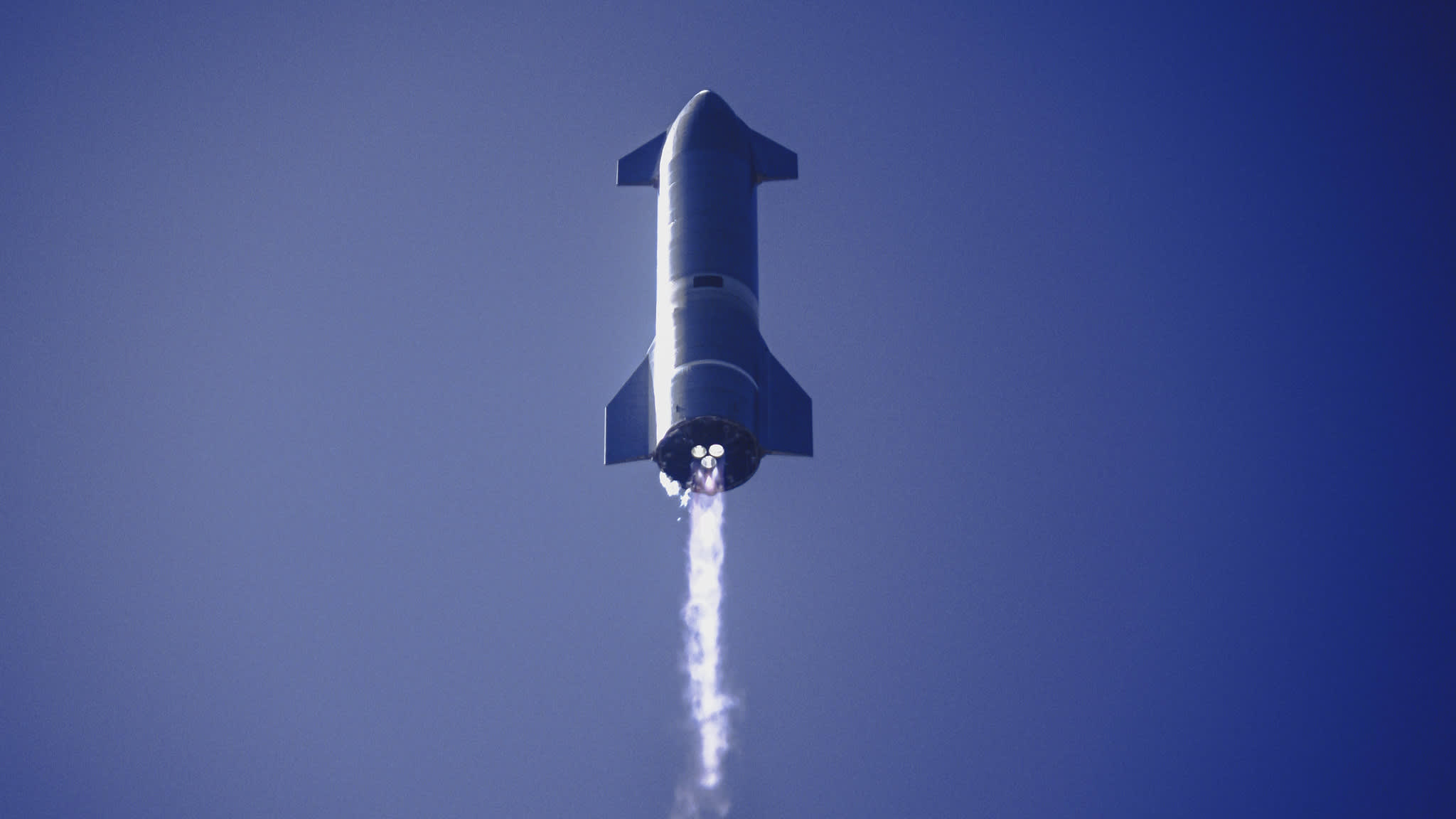The SN9 starship prototype is launched from the company’s development facilities in Boca Chica, Texas.
SpaceX
SpaceX successfully landed a prototype starship after a high altitude flight test for the first time on Wednesday, marking a major step forward for Elon Musk’s company in developing the rocket.
But minutes after landing smoothly on a concrete platform, the prototype rocket exploded. The cause of the explosion, whether it was intentional or not, was not immediately clear.
The company’s test flew with the Starship serial number 10 rocket, or SN10. SpaceX aimed to launch the prototype up to 10 kilometers, or about 32,800 feet in altitude.
The prototype of the starship is about 45 meters high, or approximately the size of a 15-story building, and is powered by three Raptor rocket engines. The rocket is constructed of stainless steel, representing the first versions of the rocket unveiled in 2019.
Musk’s company is developing the Starship with the aim of launching cargo and people on missions to the Moon and Mars.
The SN10 flight was similar to those performed by SpaceX in December and February, when it tested the SN8 and SN9 prototypes, respectively. The previous two rockets completed several development goals – including tests of aerodynamics, shutting down engines in succession and turning to orient themselves for landing – but both prototypes exploded on impact as they tried to land, unable to slow down enough.
Like SN8 and SN9, the objective of flight SN10 was not necessarily to reach maximum altitude, but to test several important parts of the starship system. SpaceX powered all three engines for takeoff and then shut them down, one at a time, as the rocket approached the top of the intended flight altitude.
The SN10 then transferred the propellant from the main tanks to the main tanks, before turning to the “belly flop” re-entry maneuver – which gives it an air-controlled descent with the rocket’s four flaps. Then, in the final moments of the descent, SpaceX spun the rocket and returned it to vertical orientation, driving the Raptor’s engines to slow down for landing.
Starship is one of two “Manhattan Projects” that SpaceX is developing simultaneously, the other being its Starlink satellite internet program. Musk previously estimated that it will cost about $ 5 billion to fully develop the Starship, although SpaceX has not revealed how much it has spent on the program so far.
The company raised $ 850 million last month in its last fundraiser at a valuation of $ 74 billion.
Musk remains “highly confident” that the Starship “will be safe enough for human transport in 2023” – an ambitious goal, as the company began rocket development and testing in earnest in early 2019.
But Musk’s timeline is the key, as Japanese billionaire Yusaku Maezawa paid for a starship flight around the moon in 2023. Maezawa announced on Tuesday that he is inviting eight members of the public to join his dear Moon mission, which will be a six-day trip to the moon and back.
Sign up for CNBC PRO for exclusive insights and analysis, and live weekday scheduling around the world.
